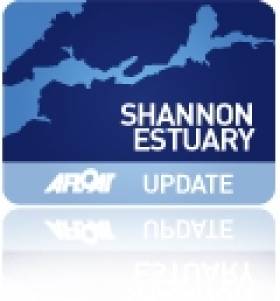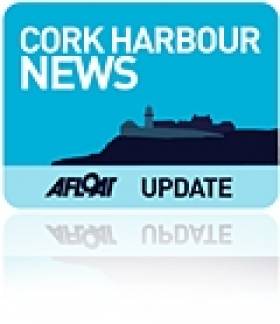Displaying items by tag: Portsand Shipping News
UK Liner Agency Kestrel Group Enters Irish Market
#NewLinerAgency – A UK liner agency, the Kestrel Group enters the Irish market this month.
Operating as Kestrel Liner Agencies (Ireland) Ltd, the firm will open its first office in Dublin, and the new entrant is expected to open further offices soon in Cork and Belfast.
The new entrant takes over the business of Greenco Shipping and the existing shareholders and employees will join the new company.
Kestrel Liner Agencies (Ireland) Ltd will represent Hoegh Autoliners, Tropical, Universal Africa Line, Cargo Levant, Nirint Shipping, Ecuadorian Line, South American Independent Line, Onego, Fednav and Nordana.
The Kestral Group was the first UK liner agent to combine liner agency with forwarding and NVOCC activity. The Group has formed strategic partnerships and joint ventures to grow the business into a global brand.
Andy Thorne, Group Chairman of Kestrel said: "Following our growth last year, opening in San Francisco in May and Cape Town in November, I am delighted that we have been able to conclude this expansion into Ireland. This is great news for the whole of the Irish market, giving shippers and consignees greater choice of carrier, and principals extended coverage.
The chairman added, “Kestrel is the first new Liner Agency business in Ireland for many years and I am certain that our stellar growth experienced elsewhere will be mirrored here. I am delighted that John Lalor, Bob Kevitt and their team are joining us.
It was confirmed by the chairman that Kestrel Liner Agencies (Ireland) Ltd will be recruiting additional sales personnel in Dublin, Cork and Belfast to assist the new strategic partnerships to grow the business. “The agency will be looking for self-motivated freight people to join, so if you know how to find logistical solutions for customers, are relationship driven and want to join Europe's fastest growing Liner Agency business, please do contact us."
Further planned expansion for 2016 includes the UAE, Namibia and additional offices in the Caribbean.
In 1994 Kestrel was formed and is the only shipping company to be named in the Queen's birthday honours list in the UK, receiving the much coveted Queen's Award for International Trade.
Masterplan for Shannon Foynes Port Company
Port expansion options are to be examined so to prepare ports for larger trade volumes when the opportunities arise. Also under consideration are the non-core assets at the Port of Foynes and Limerick Docks. To read more about the masterplan and the challenges and issues that has been identified in both ports click HERE.
The statutory jurisdiction of the estuary is under the control of SFPC, which is responsible for the estuary that runs from the mouth entrance marked by Kerry and Loop Heads and stretching far inland to Limerick City. The natural waterway can handle vessels of up to 200,000 deadweight tonnes (dwt) which are the largest ships that can dock in Irish waters.
Take a View From the Bridge
In the evening the Cork Corona Film Festival will hold a fundraiser themed the 'Amazing Cork Maritime Experience' at the NMCI from 5pm onwards.
Also in Ringaskiddy, at the Deepwater Quay, Fastnet Lines' 22,000 tonnes Julia will be open to the public between 11am to 3pm. This will allow those to tour the facilities of the 1,500 passenger/325 vehicle capacity ferry which has operated the year round Cork-Swansea route since last year.
To enable visitors to visit the events spread across the world's second largest natural harbour, a free shuttle-ferry service connecting Ringaskiddy, Monkstown,Cobh, Aghada and Crosshaven will be operating on the day. The ferry service is sponsored by the Port of Cork Company and National Maritime College of Ireland (NMCI).
- port of Cork
- Cork Harbour Open Day
- NMCI
- Fastnet Line
- National Maritime College of Ireland (NMCI)
- Ports and Shipping News
- Cork Harbour News
- Port of Cork Company
- Ferry news
- Portsand Shipping News
- Irish nautical college
- MVJulia
- Ringaskiddy Ferry Terminal
- CorkSwansea ferry route
- Cork Corona Film Festival































































